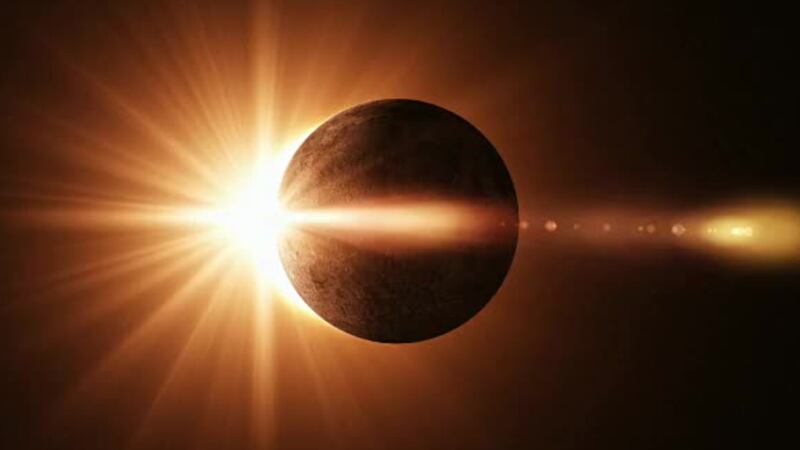We are just under one month away from the first total solar eclipse to cross the country coast to coast in nearly 100 years.
On Aug. 21, people everywhere will gaze up toward the moon to view a monumental celestial spectacle.
But what if we could see the eclipse from above instead?
This five-second, time-lapsed video, produced, shows just that -- what a total solar eclipse looks like from space.
During the afternoon of March 9, 2016, a total solar eclipse passed over Indonesia. A partial eclipse was visible in parts of Alaska, Hawaii and Guam.
A Japanese weather satellite known as Himawari-8 captured it all high above the Pacific Ocean.
Japan's H-2A rocket, which carries the Himawari-8 weather satellite, leaves the launching pad at the Tanegashima Space Center, Kagoshima prefecture. (JIJI PRESS/AFP/Getty Images)
An eclipse occurs when the moon passes directly between Earth and the sun. When the moon's shadow falls on Earth, observers within that shadow see the moon block a portion of the sun's light.
NASA explains what you see on the video:
The Sun rises to the right and sets to the left, illuminating the half of Earth that is most directly below. A reflected image of the Sun -- a Sun glint -- is visible as a bright spot that moves from right to left.
More unusual, though, is the dark spot that moves from the lower left to upper right That is the shadow of the Moon, and it can only appear when the Moon goes directly between the Earth and the Sun.
Last year, on the day these images were taken, the most deeply shadowed region experienced a total eclipse of the Sun. Next month a similarly dark shadow will sweep right across the country.
Cox Media Group








